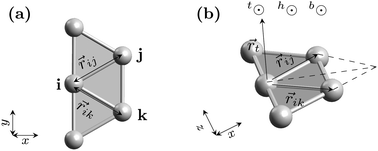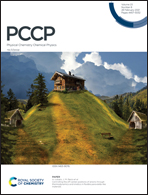Systematic cluster growth: a structure search method for transition metal clusters†
Abstract
The systematic cluster growth (SCG) method is a biased structure search strategy based on a seeding process for investigating the structural evolution and growth pattern of transition metal clusters. In SCG, a set of initial structures with size n are constructed based on the equilibrium structures of the preceding n − 1 cluster isomers by adding a single atom at all inequivalent binding sites. This strategy requires a relatively low number of evaluations for global minima localization on the potential energy surface, allowing its application in first-principles calculations. The performance of SCG is tested by using the Lennard Jones (LJ) potential energy surface. The 93.7% of the best-known solutions for Lennard Jones clusters were found for n ≤ 80 by using a relatively low number of local optimizations. Most importantly, by using SCG combined with DFT calculations (SCG-DFT), we revisit and provide the ground state structures and growth pattern for transition metal clusters TMn (where TM = Ti, Ni, Cu, Ag, Pt; and n = 6–14). The application of the code for doped clusters is also discussed. A detailed description of the present method for generating the structures of the clusters is provided.



 Please wait while we load your content...
Please wait while we load your content...